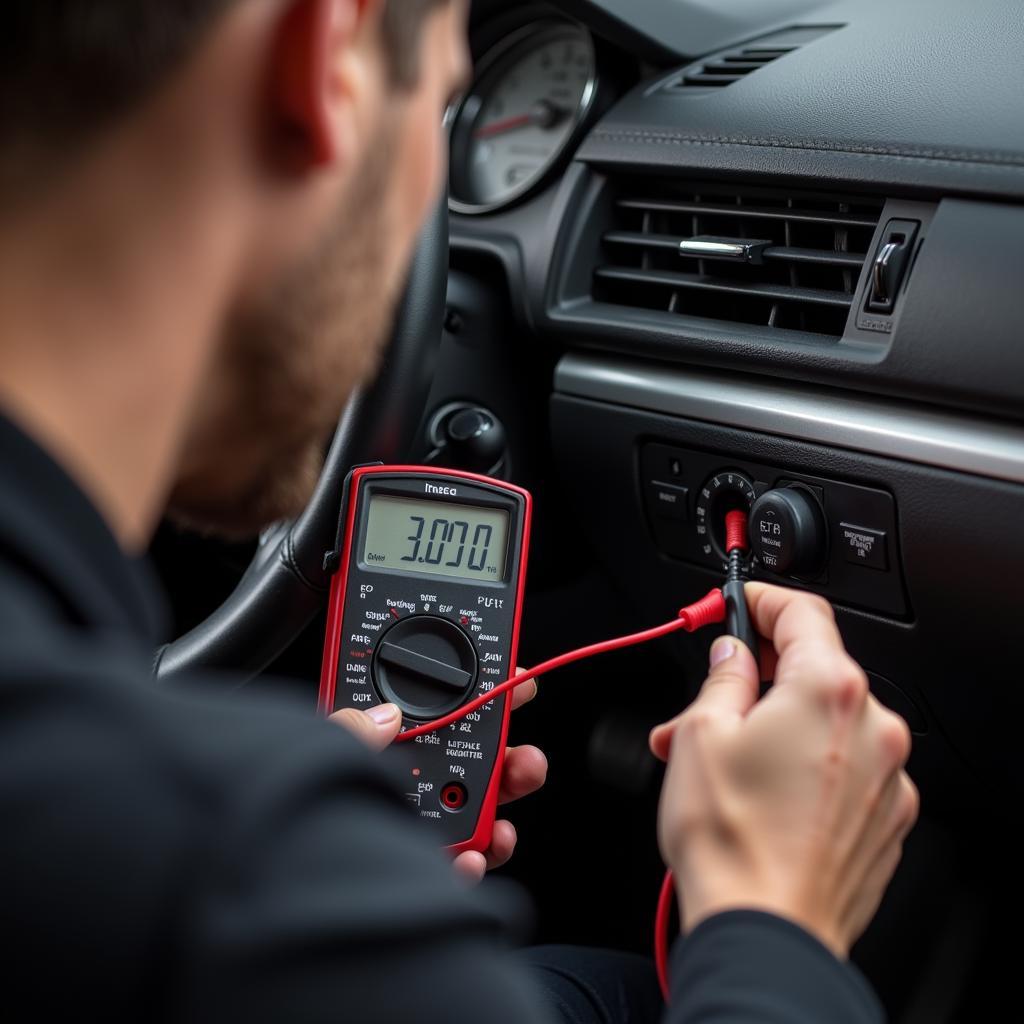Your car’s “tire maintenance” message can be a bit unsettling. What does it mean? Is it serious? This article dives deep into understanding this notification, offering guidance on what to do, and helping you keep your tires in top shape for safe and efficient driving.
Decoding the Tire Maintenance Message
Most modern vehicles are equipped with a Tire Pressure Monitoring System (TPMS). This system constantly monitors the air pressure in your tires and alerts you when the pressure drops below a certain threshold, usually indicated by a “tire maintenance” or “low tire pressure” light. While the message itself might not pinpoint the exact issue, it serves as a crucial warning that needs immediate attention. Similar to my car maintenance light is on, this tire maintenance light should not be ignored.
Why is the Tire Maintenance Light On?
The most common reason for the tire maintenance light to illuminate is low tire pressure. Underinflated tires affect fuel economy, handling, and braking performance. They also generate excessive heat, which can lead to premature tire wear and even blowouts. However, there are other potential causes:
- Faulty TPMS sensor: Sometimes, a malfunctioning sensor can trigger the light even when tire pressure is normal.
- Low TPMS battery: The sensors are battery-powered, and a dying battery can cause erratic readings.
- Recent tire rotation or change: If the TPMS sensors weren’t properly reset after a rotation or new tire installation, the system might be confused.
- Extreme temperature changes: Significant drops in temperature can cause tire pressure to decrease, triggering the light.
- Damaged tire: A puncture or leak will obviously result in low tire pressure and activate the TPMS.
What to Do When Your Car Says Tire Maintenance
If your car displays a “tire maintenance” message, don’t panic. Here’s a step-by-step guide to help you address the issue:
- Check your tire pressure: Use a reliable tire pressure gauge to check the pressure of all four tires, including the spare. Compare the readings with the recommended pressure listed on the sticker located inside the driver’s side doorjamb or in your owner’s manual.
- Inflate your tires: If the pressure is low, inflate them to the recommended level. You can do this at a gas station, using your own portable air compressor, or by visiting a tire shop. For a broader understanding of car maintenance costs, check out car maintenance costs over time.
- Reset the TPMS: After inflating the tires, you may need to manually reset the TPMS. The procedure varies depending on the make and model of your vehicle. Consult your owner’s manual for specific instructions.
- Monitor the light: After resetting the system, keep an eye on the tire maintenance light. If it comes back on, there’s likely a more serious problem.
- Visit a professional: If the light persists after checking and inflating the tires, it’s time to consult a qualified mechanic. They have the necessary tools and expertise to diagnose and fix issues with the TPMS or your tires. Knowing when should you stop doing maintenance on your car is crucial for long-term vehicle health.
Understanding TPMS Sensor Batteries
Just like any other battery, TPMS sensor batteries have a limited lifespan. Typically, they last between 5 and 10 years, depending on usage and driving conditions. When these batteries die, the sensor can no longer transmit data accurately, triggering the tire maintenance light.
“Regular tire maintenance isn’t just about pressure; it’s about ensuring the entire system, including sensors, is functioning correctly,” says John Davis, an automotive engineer with over 20 years of experience.
 Replacing a TPMS Sensor Battery: A Step-by-Step Guide
Replacing a TPMS Sensor Battery: A Step-by-Step Guide
Keeping Your Tires in Top Shape
Preventing tire-related issues is always better than dealing with them after they arise. Regular maintenance is key. This includes:
- Checking tire pressure monthly: Don’t rely solely on the TPMS. Make it a habit to check your tire pressure regularly, especially before long trips.
- Inspecting tires for wear and tear: Look for cuts, bulges, or uneven wear patterns. These are signs that your tires need attention. This is a good time to consider the is a good essay to maintenance good first car for overall car care.
- Rotating tires regularly: Tire rotation helps ensure even wear and prolongs tire life. Follow the recommended rotation schedule in your owner’s manual.
- Maintaining proper wheel alignment: Misaligned wheels can cause uneven tire wear and affect handling.
“Addressing tire issues promptly not only saves you money in the long run but also ensures your safety on the road,” advises Maria Sanchez, a certified automotive technician. This concept is also similar to how cars with a maintenance monitoring system operate for overall vehicle health.
Conclusion
The “tire maintenance” message in your car shouldn’t be ignored. It’s a signal from your TPMS that requires attention. By understanding the potential causes and following the steps outlined in this article, you can address the issue promptly and keep your tires in optimal condition, ensuring a safe and comfortable driving experience. Contact AutoTipPro at +1 (641) 206-8880 or visit our office at 500 N St Mary’s St, San Antonio, TX 78205, United States for further assistance.






Leave a Reply